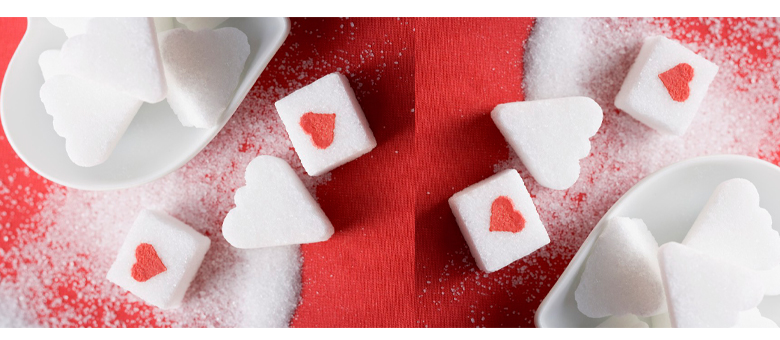How Many Shapes of Cube Sugar?
 Katherine /
Katherine /  22 Mar,2016
22 Mar,2016
Joining a glucose and a fructose will get you a molecule of sucrose. White table sugar, for one example, is pure sucrose — which means that table sugar is 50% glucose and 50% fructose. (Also of note: The lay-term “sugar,” such as when you see it in an ingredient list, usually means “sucrose.”)
Matching up two glucose molecules results in maltose. Finally, lactose, the sugar found in milk, is made of glucose paired with galactose. (Galactose is found almost exclusively in nature bonded with glucose to make lactose, not on its own. In other words, you won’t find jars of galactose on the grocery store shelf.)
So what happens when you eat these sugars?
When you eat monosaccharides (glucose, fructose), your body can absorb them right into the bloodstream. Cells can use glucose directly (remember, it’s your body’s preferred energy source). Fructose will need to be broken down first by your liver, turning it into glucose.
This is all what I can tell you about cube sugar.
The great thing about these sugar hearts is that they require only three or four ingredients that you probably already have in your pantry - sugar, water, food coloring and powdered egg whites (optional).
Now you are ready to make your sugar hearts. If you have a candy mold, feel free to use it. None of my heart molds happened to be deep enough, so I just used regular cookie cutters. Now, press the cutters straight down into the sugar and carefully release the shapes onto a parchment lined cookie sheet. If you find that the sugar isn't holding it's shape well, try adding a bit more water or egg white - but just don't over-do it or you'll get sugar mush! Now, you can obviously make these in any shape you like - we decided to make some flower shapes in addition to our hearts.









